About UA
Learn how UA is supporting the NYC Department of Education’s science initiatives and the new NY State Science standards?
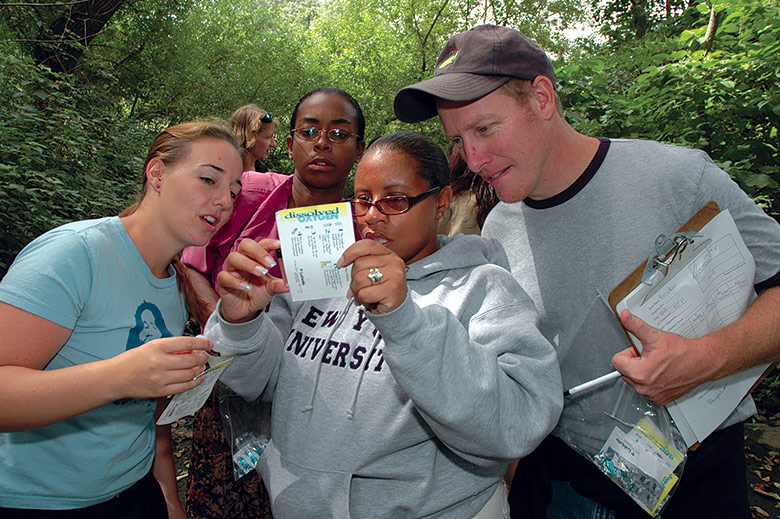
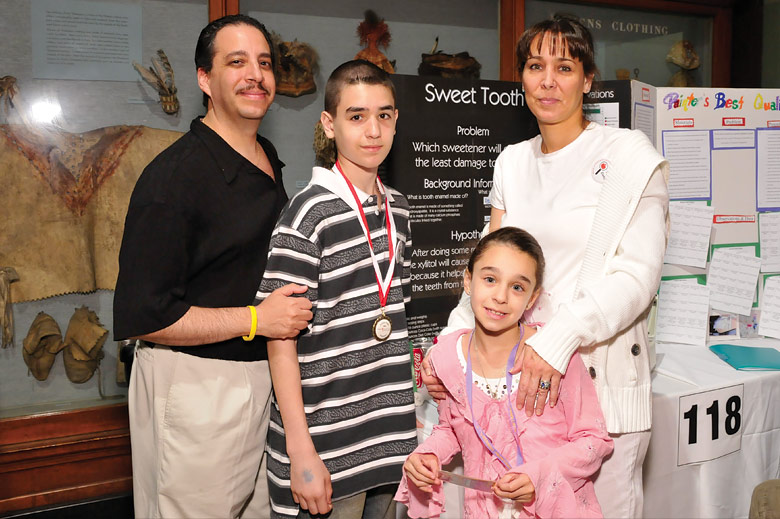
Celebrating 20 years of “learning science by doing science”
Since 2004, eight of New York City’s leading cultural institutions — including museums, zoos, and botanical gardens — have worked with the New York City Department of Education to support high-quality research-based science instruction in the city’s elementary and middle schools. Urban Advantage includes the American Museum of Natural History, the Brooklyn Botanic Garden, the New York Botanical Garden, the New York Hall of Science, the Queens Botanical Garden, the Staten Island Zoo, the Wildlife Conservation Society’s Bronx Zoo and New York Aquarium, and the New York City Department of Education, with leadership funding from the New York City Council.
Urban Advantage’s Six Research-based Components
UA is designed to support the science goals of the public-school system and supports grades 3-8. It is founded on six key components designed to support schools, principals, teachers, students and families. They are:
- High-quality professional learning courses for teachers and administrators
- Classroom materials and equipment that promote active engagement with science practices in the classroom.
- Access to UA Partner institutions through free school and family field trips
- Family outreach through family events, celebrations of student achievement, and parent coordinator workshops
- Capacity-building and sustainability structures, including support for the development of lead teachers
- Assessment of program goals, student learning, systems of delivery, and outcomes
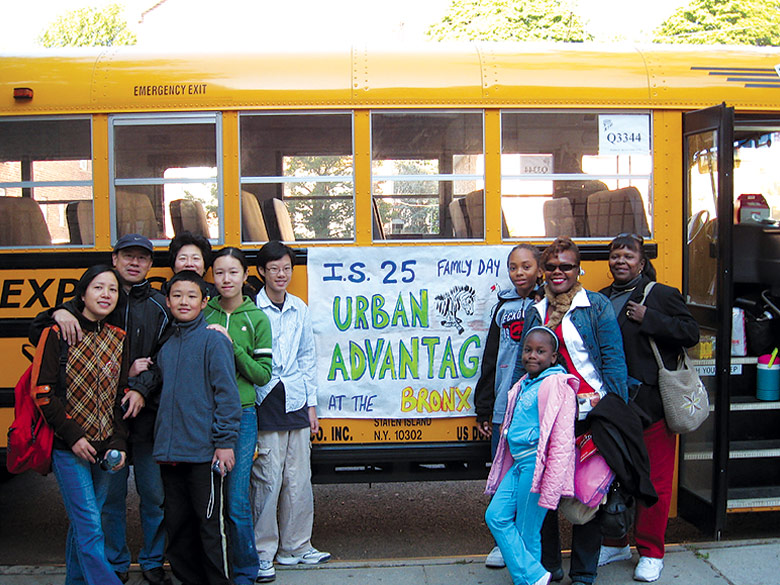
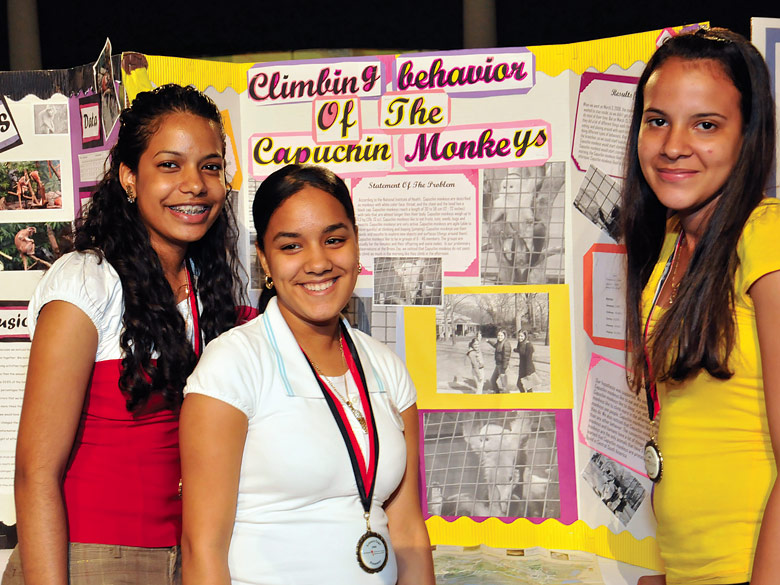
How is UA supporting the NYC
Department of Education’s science initiatives and the new NY State Science standards?
UA, the new New York State P-12 Science Learning Standards, and the Next Generation Science Standards (NGSS):
New York State’s new P-12 Science Learning Standards are based on the Next Generation Science Standards (NGSS). Urban Advantage’s view is that the NGSS offer science classrooms an urgently needed and transformative vision of science teaching and learning, in which students actively engage in a range of key science practices as they apply core science ideas to make sense of their world. The active classroom culture envisioned by the NGSS reflects UA’s founding belief that to learn science students must “do science.”
NGSS transforms prior “inquiry-based” or “hands-on” approaches to learning by conceiving of a more inclusive set of 8 science practices which shape how scientists have always made sense of the world. This vision holds that these practices, which are consistently employed by professional scientists to generate new knowledge, should at all times be integrated with core science concepts (what we traditionally think of as “the content”). In contrast,
traditional science instruction often teaches science practices separately from content…often under the heading “the scientific method.”
The NGSS vision requires a shift away from seeing science as a body of memorized facts, instead understanding science as a way of thinking, talking, and acting, that students need to engage in to make sense of their world. Students engage in learning “three dimensionally,” meaning (1) actively using the science and engineering practices (SEPs) in the contexts that are (2) rich in core science ideas while (3) identifying those concepts that cut broadly across the science disciplines in meaningful ways.
The critical role of UA as a Professional Learning provider in NYC:
UA believes that, as a professional-learning focused science program, it is uniquely positioned to design and provide the professional learning that educators urgently need as they make the ambitious pivots and transformations required in their work. To prepare for this critical moment, UA staff have been receiving for several years now their own professional learning related to the NGSS and NGSS-inspired curricula, and UA has since been rethinking program goals and redesigning UA PL courses for teachers with these standards in mind.
The role of UA science-rich cultural institutions:
The new NGSS are often implemented by framing a science unit with an “anchoring phenomenon” to launch the unit and frame the learning goals. The goal of the unit becomes to explain the phenomenon. The pathway from the starting phenomenon to an explanation is sometimes referred to as a “storyline.” This “storyline” is a blueprint for a sequence of active knowledge building experiences by students that leads to the construction of the understandings needed to explain the phenomenon. We feel UA institutions are uniquely positioned to provide students with authentic experiences of natural and man-made phenomena. Our exhibits and resources are designed to immerse students in these authentic phenomena. A goal of UA’s work with teachers is to make these opportunities for engagement, and for framing learning sequences, apparent to our UA teachers.
The role of Culturally Responsive Sustaining Education (CR-SE):
The active knowledge building by students described above is simply not supported by traditional teaching methods referred to as “chalk and talk.” Active learning, organized around the 8 SEPs, is critical to achieve these goals. And discussion and dialog among students becomes essential as students actively make meaning and construct their new understandings. CR-SE can be understood as critical to the NGSS approach because a high-level of student engagement and personal commitment is critical. Teachers must foster safe spaces for students to take responsibility for learning and actively make meaning of direct experiences (in contrast to rote assimilation of information). Students must be given ample opportunities to make meaning during their science classes by informing learning with their day-to-day lived experiences, in and out of school. They need to feel safe and be eager to infuse their science learning with their lived experiences. UA has thus put CR-SE at the highest level of its priorities, beginning with staff development, and modeling CRSE strategies by including them in our teacher PL.
The role of a clear teaching framework: Ambitious Science Teaching:
Teaching and unit planning will look very different in an NGSS (New York State’s new P-12 Science Learning Standards) world. To provide a blueprint for what teaching looks like that attends to the NGSS, UA has been referencing the Ambitious Science Teaching (AST) framework. UA has piloted this framework with groups of UA teachers; feedback to date shows that having a coherent organizing framework is highly supportive of teachers learning as a community and shaping discourse within their community. To this end, UA will be integrating elements of AST into its PL courses for teachers.
Program Impact:
Urban Advantage serves 46% of New York City schools with eighth grade students. Program-wide assessments show that UA has had a tangible impact on the New York City Department of Education’s middle school science education program as measured by:
- Learning experiences in UA classrooms have become more inquiry-based.
- Science investigations are now designed around opportunities to conduct hands-on investigations.
- UA teachers report more mastery of science content and an increased capacity to support students’ investigations.
- Students have more confidence in their grasp of science content.
- An unprecedented number of school groups and families have visited the eight cultural institutions.
Since 2008, researchers have studied the impact of Urban Advantage (UA) on students’ achievement in science. This research shows that:
- UA positively affects students’ performance on the Grade 8 Intermediate Level Science (ILS) test. Students of color and students in traditionally lower-performing middle schools show the biggest gains.
- Students who have a UA teacher are 4 percentage points more likely to score “proficient” on the exam compared to their non-UA peers. (Weinstein & Shiferaw, 2017).
- UA teachers are approximately 3% more likely to stay at their school the following academic year, which is equivalent to approximately 45 teachers per year staying at their school rather than leaving (Weinstein & Shiferaw, 2017).
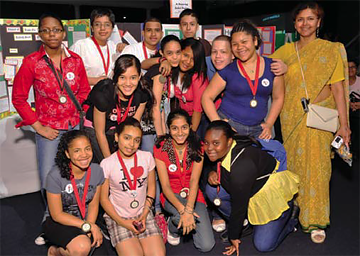
– UA Teacher
